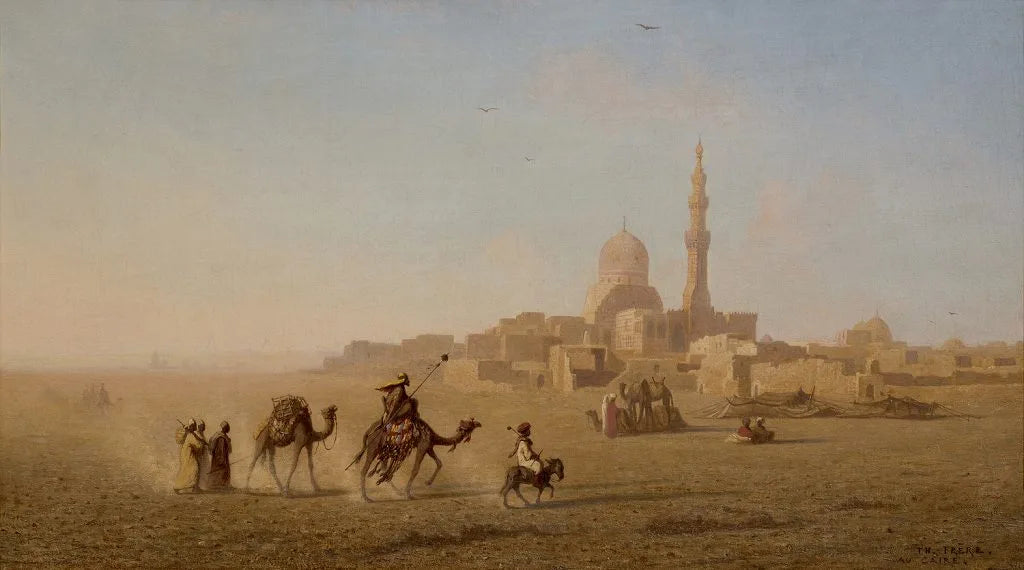Charles Théodore Frère

Charles-Théodore Frère was born in Paris in 1814, as the son of a music publisher and the older brother of genre painter Pierre-Edouard Frere. Théodore Frère studied at the Ecole des Beaux-Arts under Camille Roqueplan and Leon Cogniet, and after his studies, embarked upon a tour of Alsace, Normandy and Auvergne to gather inspiration for landscape paintings. He returned to Paris and exhibited these landscapes in the 1834 Paris Salon, before turning his attention to gathering inspiration from much further afield.
In 1836, Frere embarked upon his first journey to Algeria, marking his turn towards Orientalist landscapes and artworks. Algeria had only recently become part of the French Empire, and the government was strongly encouraging artists to travel to the nation and paint the scenery of their new imperial addition. Frere evidently became enamoured by the cultures of the Middle East and North Africa, as evidenced by his continual travel to the Near and Middle East. Indeed, Frere’s infatuation with this part of the world led to him opening his own studio in Cairo, and is reflected by how his works at the Salon consisted solely of Oriental themes after 1855.
In 1869, Théodore Frère visited the East for the last time as part of an artistic party for the Empress Eugenie. Accompanied by Jean Leon Gerome, Narcisse Berchere and Eugene Fromentin, he had been tasked with creating a series of watercolours to celebrate the opening of the Suez Canal.
Théodore Frère continued to exhibit at the Salon until his death, having won a second-class medal in 1848 and a first-class medal in 1865. He passed away in 1888, leaving a legacy as an Orientalist painter whose works were treasured by both European patrons as well as the Ottoman powers in Egypt.